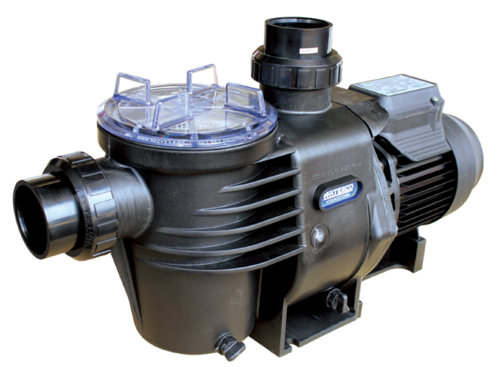
Swimming pool maintenance requires an efficient filtration system to keep the water clean and safe. Sand filter pumps play an important role in this process, and in this guide, we will explore their functions, benefits, drawbacks, and whether they offer a worthwhile investment for your pool.
The Power of Sand Filters
Your pool's filtration system plays an important role in preserving water clarity and safety. Selecting the ideal filter is not a decision to be taken lightly. Sand filter pumps, best known for their efficiency, excel in dealing with both large and small debris.
While most filters adeptly capture larger particles like hair, insects, and leaves, it is the minute culprits, such as algae and phosphates, that pose the real challenge.
Sand filters often go unnoticed, yet they play a crucial role in eliminating these unseen irritants from your pool, effectively minimizing the development of algae.
How Do Sand Filters Work?
As the name suggests, sand is at the core of a sand filter. Various particle sizes of sand reside within the filter.
A porous double bottom, often crafted from materials like steel, plastic, or concrete, completes the filter's structure. Sand filters come in various sizes, tailored to the liquid's flow rate, typically water.
The filtration process initiates as water flows from top to bottom through the sand bed, with the particle size of the sand playing a crucial role. To target different floating particles, various layers of sand with differing particle sizes are employed.
Embedded within the sand bed is a porous layer facilitating the filtration process. Moreover, sand filters can host both physical and biological processes, leading to the removal of additional impurities.
Over time, captured particles accumulate in the upper layer of the sand filter, necessitating a backwashing procedure. Backwashing, achieved by reversing the water flow, flushes out the accumulated impurities, rejuvenating the filter for further use.
Fast vs. Slow Sand Filtration
Fast and slow sand filtration methods exhibit key differences. Slow sand filtration introduces a biological component absent in the mechanical fast sand filtration process. The presence of biomass in slow sand filters promotes the decomposition of organic matter.
However, slow sand filters are incompatible with backwashing, as this process would strip the filter of its biological effectiveness.
The Pros and Cons of Sand Filters
Advantages
The following are the advantages of a sand filter.
Versatile Debris Removal
Sand filters excel in eliminating a wide range of floating particles.
Additional Water Treatment
They can tackle deferrisation, demagnisation, and ammonia removal.
Reduction of Microorganisms
Sand filters effectively reduce the numbers of protozoa and bacteria.
Ease of Operation
Sand filters are user-friendly and require minimal maintenance.
Longevity
These filters offer a long service life, making them a cost-effective choice.
Disadvantages
Like other filtration systems, sand filters have its drawback too, such as the following:
Disposal Costs
The filtered water may require additional treatment, incurring extra expenses.
Limited Virus Removal
Sand filters are less effective against viruses.
Clogging
Slow sand filtration is susceptible to clogging issues.
Fine Particle Challenge
Fine dust particles that are too small may evade filtration.
Transportation Difficulty
The weight and bulk of sand filters can pose transportation challenges.
Impurities Removed by Sand Filtration
Sand filtration proves highly effective in removing a spectrum of impurities, including solid particles, sludge, insects, seeds, precipitated iron and manganese particles, as well as protozoa and bacteria. In fact, this filtration method is not confined to pools; it can also treat surface water, cooling water, waste water, process water, and even drinking water.
Additional Functions of a Sand Filter
Sand filters can perform additional tasks, such as maintaining water circulation to reduce microorganism reproduction. The process of backwashing facilitates the permanent removal of filtered dirt from the pool.
Moreover, sand filter pumps play an important role in water circulation, ensuring effective filtration while operating pool accessories like cleaning sets and pool robots. They can also pump water over significant height differences, a valuable function for setups involving pool solar heaters.
Filtration Performance and Pool Size
The concept of filter pump strength is a common topic of discussion. Some recommend a robust filter pump, assuming it to be a universal solution. But in reality, it's more complicated. In fact, a sand filter should circulate the entire pool water at least once every five hours.
For instance, if your pool holds 20,000 litres, your sand filter must process a minimum of 4,000 litres per hour to complete the filtration cycle within the recommended timeframe.
Final Takeaways
The decision to invest in a pool sand filter pump comes down to understanding its value. As our comprehensive guide has shown, a pool sand filter can be a worthwhile investment for their proven ability to tackle impurities, user-friendly maintenance, and extended service life.
All in all, to make an informed choice about whether a pool sand filter is worth the money for you, evaluate your specific need and consider the long-term benefits.